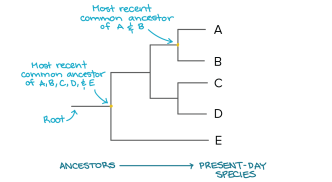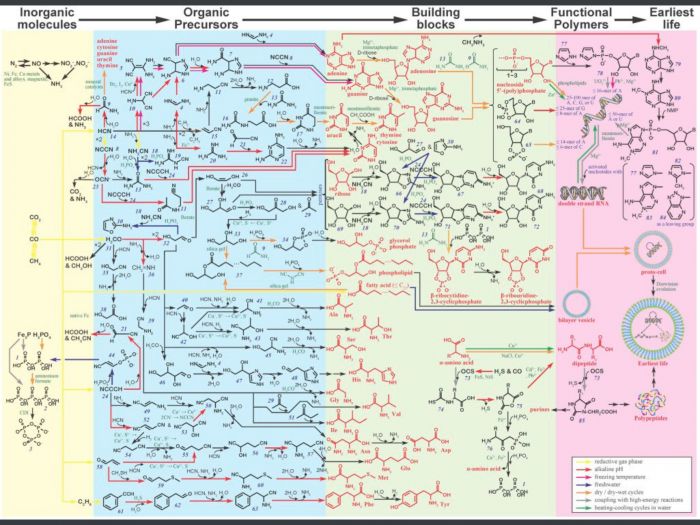We
We are all more closely related than you think.
Traditionally the development of life has been portrayed in stages (Figure 1). Life was once one thing (the Root) and through fits and starts came into being us, the most complex forms of life on the planet[1]. But where did the root come from?
Life is thought to have started from simple inorganic molecules (Figure 2) [2][3] which interacted to make other molecules which eventually could replicate themselves. Imagine, the simplest thing that can replicate itself, however, every billion replications an error occurs making a new type of replicant which then over time repeats this process. Add a dash of selection of the best replicants by evolution and a billion years later you get life...
This process is called abiogenesis. If you wait another 3.5 billion years, the process becomes even more complex, and results in multicellular organisms, like us. Whilst the traditional stepped classification (see Figure 1) is useful to scientists, as it makes digestible chunks to interpret (think binary vs analogue), in the real world the process is much more fluid. Similar to the roots of a tree branching out, although many stems are produced it is still the same super organism travelling through time, as shown below.
We are all more closely related than you think, as all life, in short, is us travelling through time!
References
- ↑ https://en.wiktionary.org/wiki/not_my_circus,_not_my_monkeys#:~:text=(colloquial)%20It's%20none%20of%20my,a%20volatile%20or%20delicate%20situation.
- ↑ Dodd, Matthew S.; Papineau, Dominic; Grenne, Tor; Slack, John F.; Rittner, Martin; Pirajno, Franco; O'Neil, Jonathan; Little, Crispin T.S. (1 March 2017). "Evidence for early life in Earth's oldest hydrothermal vent precipitates". Nature. 543 (7643): 60–64. Bibcode:2017Natur.543...60D. doi:10.1038/nature21377. PMID 28252057. Archived from the original on 8 September 2017. Retrieved 2 March 2017.
- ↑ Witzany, Guenther (2016). "Crucial steps to life: From chemical reactions to code using agents" (PDF). BioSystems. 140: 49–57. doi:10.1016/j.biosystems.2015.12.007. PMID 26723230.


